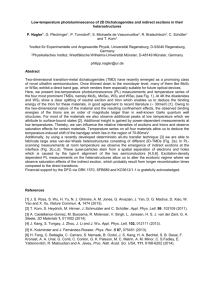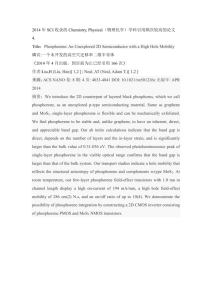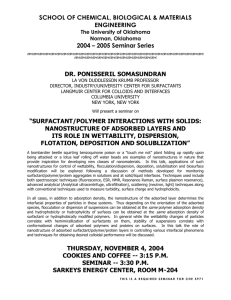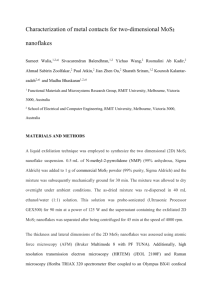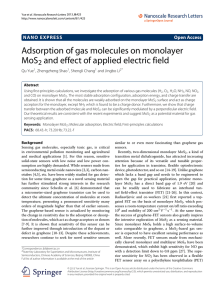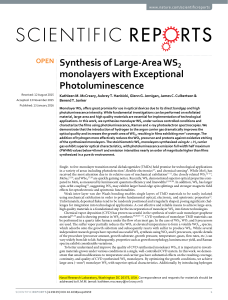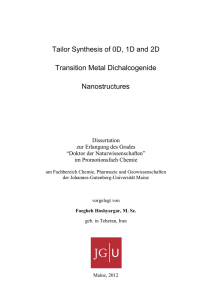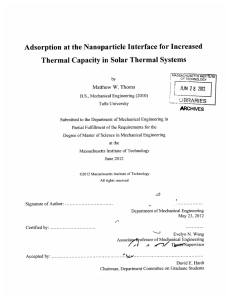INFRARED SPECTROSCOPIC STUDIES OF ADSORPTION ON MoS AND WS
advertisement
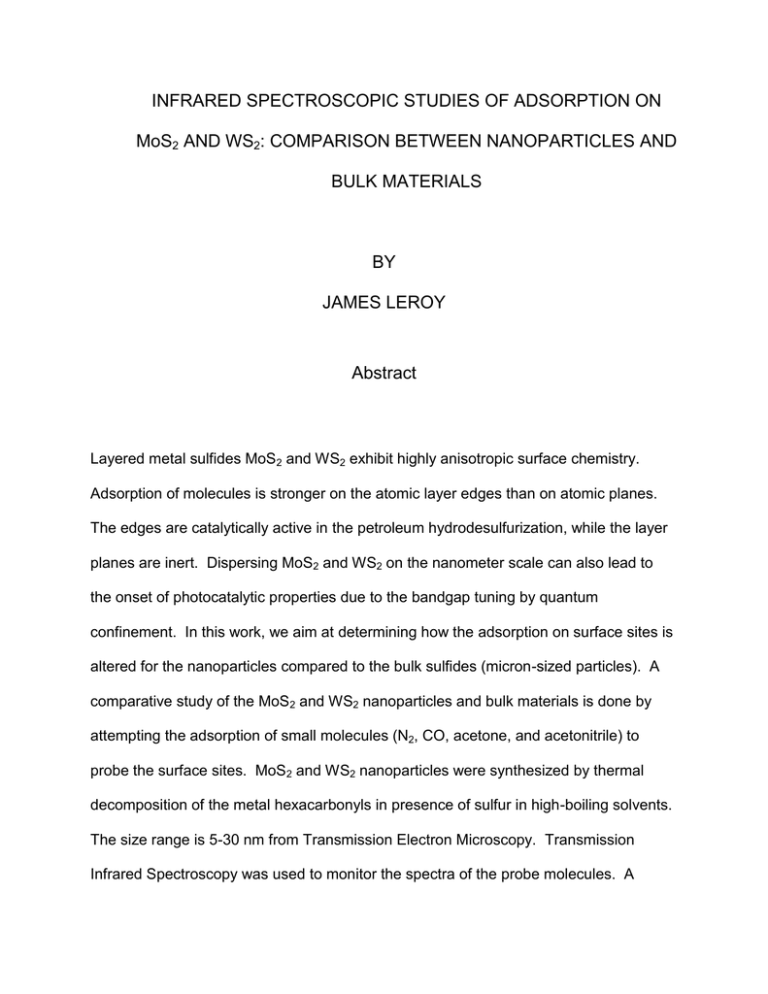
INFRARED SPECTROSCOPIC STUDIES OF ADSORPTION ON MoS2 AND WS2: COMPARISON BETWEEN NANOPARTICLES AND BULK MATERIALS BY JAMES LEROY Abstract Layered metal sulfides MoS2 and WS2 exhibit highly anisotropic surface chemistry. Adsorption of molecules is stronger on the atomic layer edges than on atomic planes. The edges are catalytically active in the petroleum hydrodesulfurization, while the layer planes are inert. Dispersing MoS2 and WS2 on the nanometer scale can also lead to the onset of photocatalytic properties due to the bandgap tuning by quantum confinement. In this work, we aim at determining how the adsorption on surface sites is altered for the nanoparticles compared to the bulk sulfides (micron-sized particles). A comparative study of the MoS2 and WS2 nanoparticles and bulk materials is done by attempting the adsorption of small molecules (N2, CO, acetone, and acetonitrile) to probe the surface sites. MoS2 and WS2 nanoparticles were synthesized by thermal decomposition of the metal hexacarbonyls in presence of sulfur in high-boiling solvents. The size range is 5-30 nm from Transmission Electron Microscopy. Transmission Infrared Spectroscopy was used to monitor the spectra of the probe molecules. A dedicated experimental setup has been constructed that consists of a high-vacuum chamber with a base pressure of 5×10-7 Torr. At the lowest achievable temperature of the sample (-145°C), N2, CO, and acetone were found to not adsorb strongly enough to be retained in vacuum on these materials. Acetonitrile was found to adsorb on these materials at -145°C and to desorb between -90°C and -50°C. The nanomaterial samples adsorbed significantly more acetonitrile than the corresponding bulk sulfides, as judged by the infrared signals intensity. Qualitatively, adsorbed acetonitrile species on nanodispersed and bulk sulfides are the same. It is likely that most of the adsorbed acetonitrile observed is physisorbed as ice or adsorbed on the sulfur-terminated terraces. At the final stages of desorprtion, distinctly different adsorbed species are seen whose C N stretching IR bands are shifted to higher frequencies. It is likely that these minority species are at monolayer or submonolayer coverages. The exact nature of the species requires further studies.
